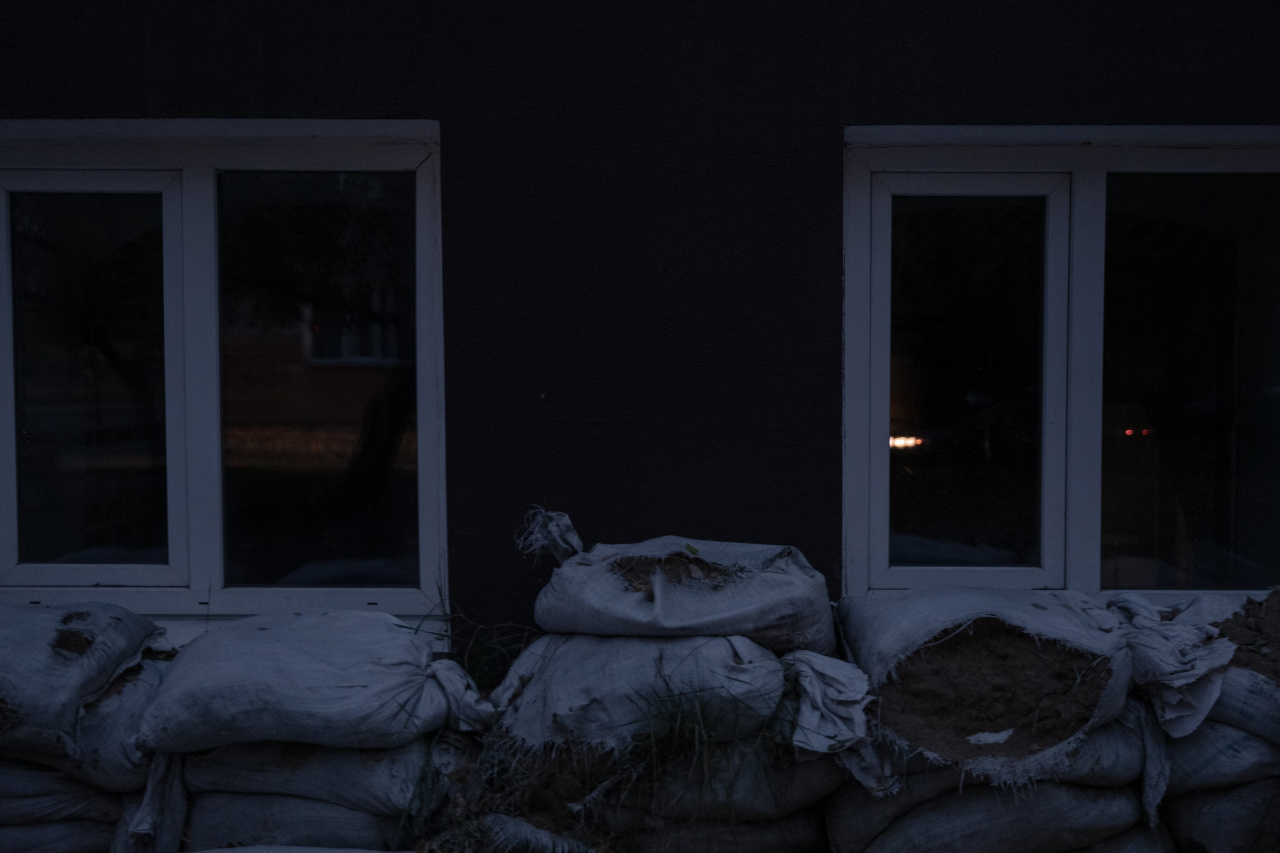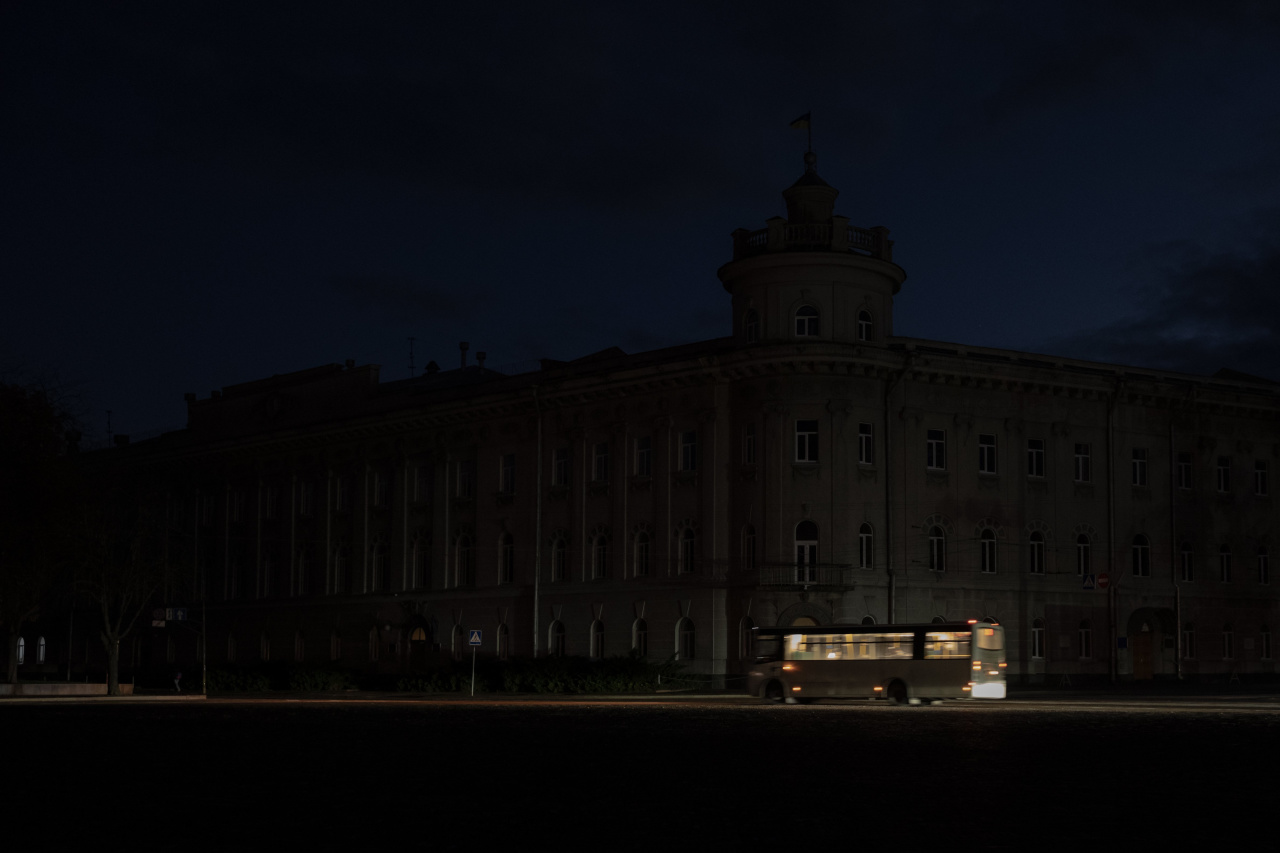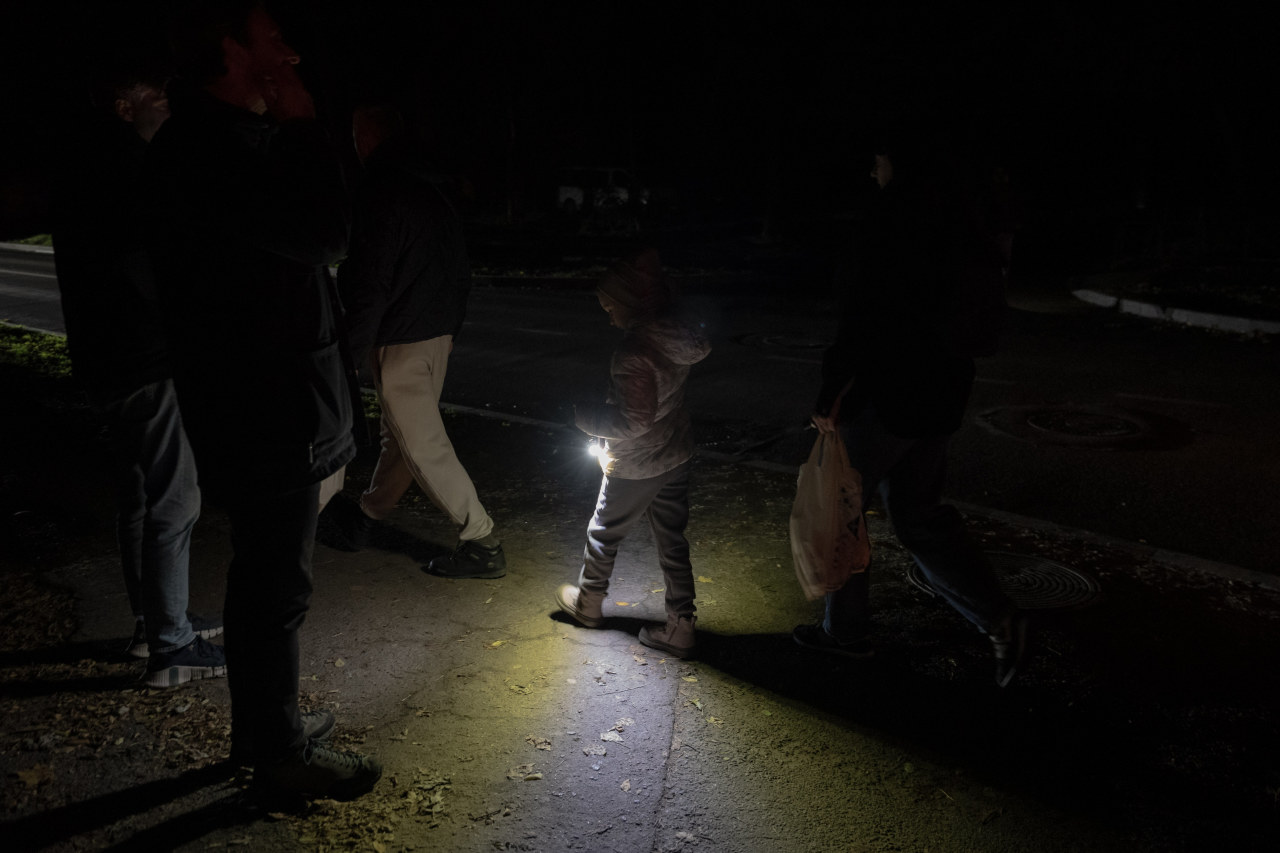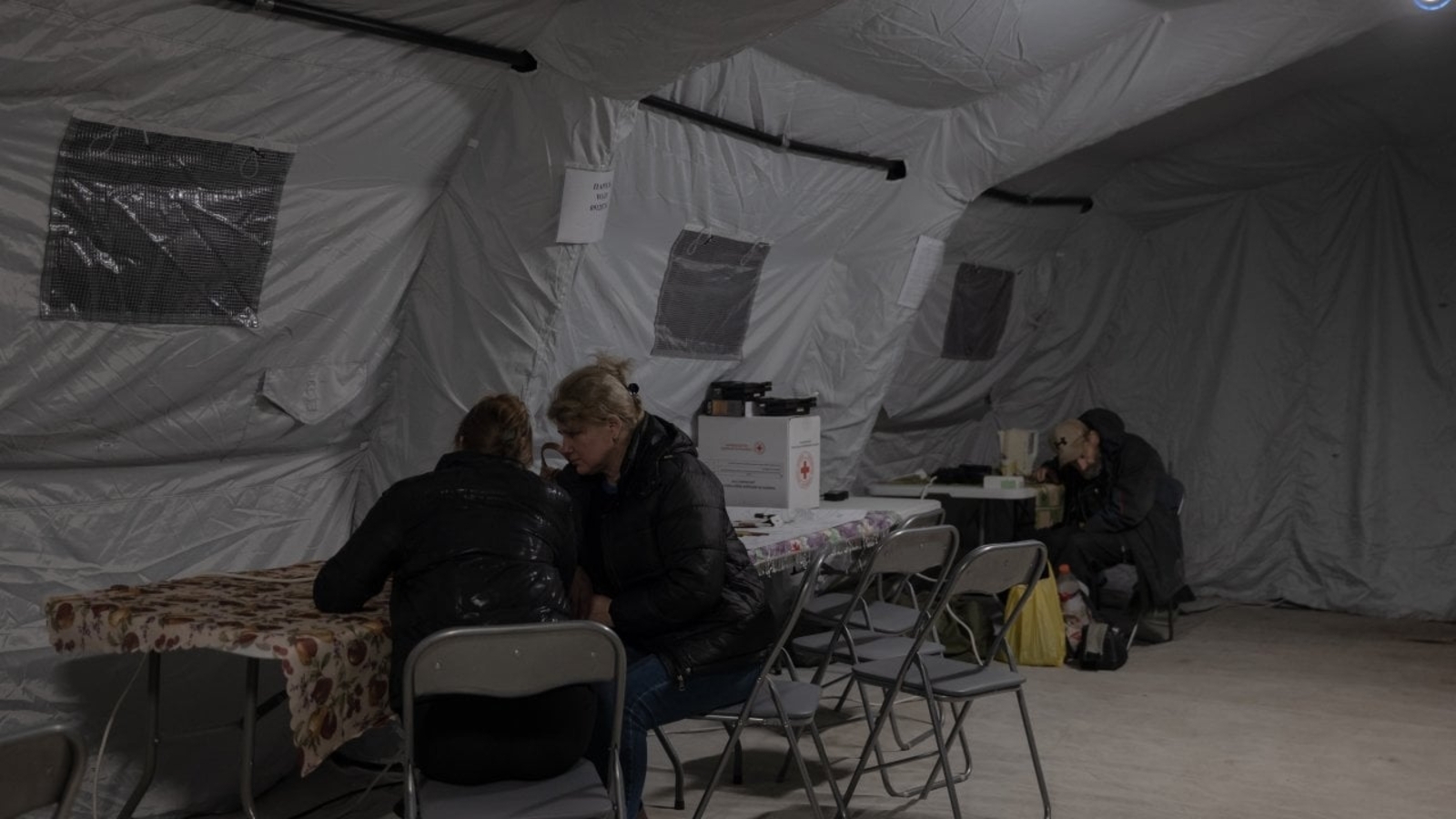CHERNIHIV, Ukraine—Within a week of the first drone barrage, this city of 270,000 people was left with rolling blackouts. Trolley buses sputtered to a halt in the middle of the road. Theater stages went dark during the final act. Schools closed. Air-raid sirens drowned out generators humming on street corners.
It was just the start of their ordeal. Further attacks hit power plants in surrounding towns that connect Chernihiv to Ukraine’s national grid. Others hit substations inside Chernihiv itself, making it impossible to evenly distribute power.
As Ukrainians prepare for their fifth winter at war, what has happened to Chernihiv in recent weeks serves as a portent for cities throughout the country. Major population centers including Kharkiv, Sumy and Kyiv are already seeing blackouts as Russia ratchets up its strike campaign while temperatures drop.
“We were first, and now you see it happen across Ukraine,” said Dmytro Bryzhynsky, the head of Chernihiv’s military administration. “They can’t beat our armed forces on the battlefield, so they’ve started a war on civilians.”
Ukraine’s power grid has weathered 3½ years of Russian bombardment, but the speed and scale of today’s attacks dwarf what came before. Russia has dramatically stepped up production of cheap long-range drones, and is now capable of overwhelming many cities’ air defenses with attacks involving hundreds of explosive craft.
During his visit to the U.S. last week, Ukrainian President Volodymyr Zelensky met with American energy executives as part of efforts to secure more U.S. support to address his country’s looming energy crisis.
Ukraine has also responded with its own attacks against Russia, using long-range drones and missiles to take out at least 15% of Moscow’s oil-refining capacity in recent months, according to analysts. Those attacks have at times left thousands of Russian residents without power.

But Moscow’s strategy to bomb substations, coal mines and gas sites in Ukraine hasn’t succeeded in bending Kyiv to Moscow’s will. Last winter, energy workers largely maintained the power supply, and this year authorities have surged imports of equipment and alternative energy resources with help from allied governments including the U.S.
Much of that has filled sprawling underground storage facilities.
After a barrage of drone and missile attacks on gas infrastructure in the spring destroyed 42% of Ukraine’s daily gas generation capacity—just as it was preparing to build up its reserves for the following winter—the government instructed state-owned Naftogaz to increase underground storage to 13.2 billion cubic meters of gas, according to Serhiy Koretsky, the company’s CEO.
Naftogaz reached that mark by early October, just as Russia’s new wave of strikes began, Koretsky said. It is now pumping more gas into the storage units to place itself in the best possible position to keep supplies running if Russian attacks intensify. It is also scrambling to raise funds for replacement parts from abroad, since so much equipment has been made inoperable by the strikes.
“They’ve targeted our production facilities, our storage, our compressors, our distribution stations,” Koretsky said, “every link in our infrastructure.” He said that to get through winter without further attacks, Ukraine needs an extra 4.4 billion cubic meters of gas—equivalent to around $2.2 billion.
In Chernihiv, the need is particularly acute. The city has delayed by 10 days the activation of centralized heating that warms three-quarters of its homes, to ease pressure on scant supplies. It is bringing in alternative energy supplies to offset any deficits that arise.


Keeping the lights on has been a Herculean, and dangerous, task. Chernihiv’s military administration has been sending workers out daily to repair damaged sites, often at risk to their lives. Two were killed by a Russian Lancet drone on Oct. 10, as they made their way from repair work at a power plant.
The city has also bought new equipment to replace damage at power stations, and imported alternative energy resources. But residents are bracing for the worst.
“Things definitely won’t get better,” said Danylo Zaychenko, a 21-year-old barber in Chernihiv who has been relying on a generator to give haircuts indoors but often invites his clients for cuts on the street when the power systems fail.
After sundown, much of Chernihiv is shrouded in darkness. The streetlights are off to conserve electricity, and residents walk along the sidewalk by flashlight, finding their way to the store or back home from work. The city’s only movie theater has closed, and basic services are often interrupted by a lack of power.

Chernihiv is an easy target. It is located along a primary flight path for Russia’s Shahed drones and just 43 miles from the border, a distance that the drones take 20 minutes to cover. The city’s scant defenders—usually soldiers mounted on pickups and firing machine guns into the air—have little time to react. There are no sophisticated air-defense systems as there are in Kyiv.
Russia also has adapted its drones to fly higher and faster, and to detect Ukrainian drones and aircraft on a mission to bring them down. The drones now often carry a payload twice the size of two years ago.
To ease pressure on residents, Chernihiv has opened a network of “resilience centers,” where people can come to charge devices or warm up when their homes are without power. Inside the centers—often large tents near traffic roundabouts, or rooms inside municipal buildings—there are beds to sleep on and toys for children to play with.
Tetiana Torba was one of several residents sitting at a resilience center in a northern district of Chernihiv one evening this week. The temperature outside had dropped to 40 degrees, and she came to escape the cold and charge her phone so she could contact relatives she might visit for a chance to shower.
“I think I’ll have to leave the city if this continues,” she said. Her dental appointment earlier in the day had been canceled because the dentist’s office had no power.

It is worse for parents, who have to juggle child-care duties alongside work. Since authorities ordered schools in Chernihiv to close last week, citing the rolling blackouts, Hanna Skorohod’s daughter Sasha, 7, has learned to connect her mother’s laptop to a power bank while she attends online classes from home. Often the classes are canceled because the teacher’s internet connection is down.
“The kids should be back in school, not struggling with power outages and connection issues at home,” Skorohod said.
She and other residents of the city say they have learned to cope with challenges. When Russia invaded Ukraine in February 2022, tanks and troops poured over the border into Chernihiv and within days had surrounded the city and occupied parts of its northernmost districts.
Key power stations were disabled, and other energy facilities suffered damage. The city spent two months with intermittent power and water. After Russia was ousted from the region in March 2022, authorities spent more than 200 million hryvnia, equivalent to about $4.8 million, on repairing damage to critical energy infrastructure, according to Oleksandr Lomako, the city’s mayor until December last year.
Now, as those same facilities are pounded by Russian drones and missiles, officials say they are staying calm and putting old skills to use once again.
“We’ve faced this danger before. But we are more prepared this year,” said Bryzhynsky, the military administrator in Chernihiv. “People know what to do, there are more resources at our disposal. It won’t be easy, but we’ll manage this year too.”
Write to Matthew Luxmoore at matthew.luxmoore@wsj.com


